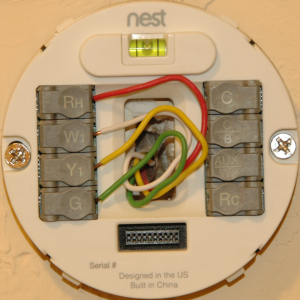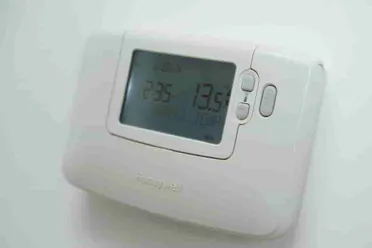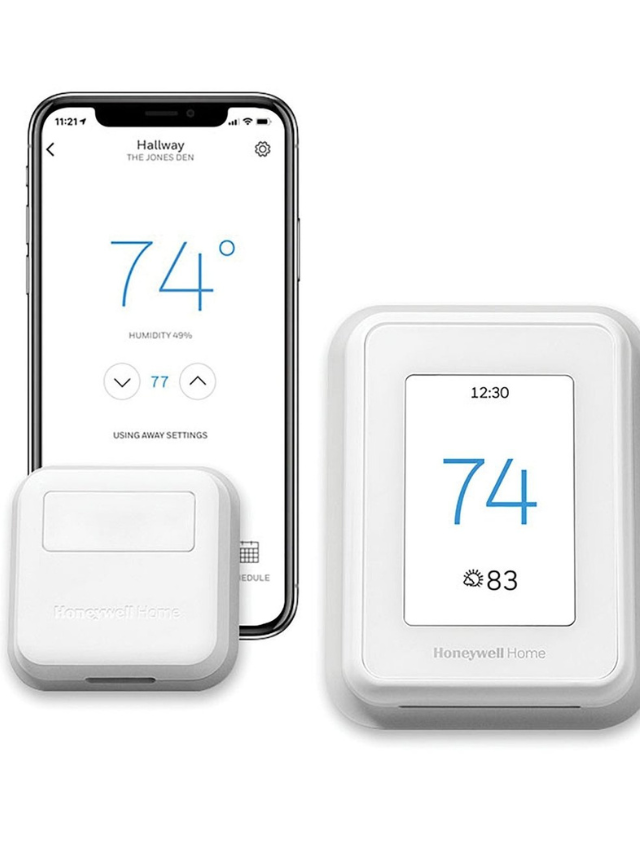Nowadays thermostat plays a major role in our homes to control heating and cooling. It’s very important you to that, What happens if the thermostat battery died?
Every 7 homes out of 10 have a thermostat installed in their homes for controlled cooling and heating.
When our heating and cooling depend on the thermostat. We should take care of thermostat maintenance and how it can run efficiently.
Is your thermostat battery weak?
How do I know if my thermostat needs a new battery?
If you have a dead battery inside your thermostat then you see no Power to Thermostat. A weak battery leads to many problems in your heating and cooling system.
To know more about what can happen with a weak or dead battery in your thermostat.
will thermostat work without batteries?
How you can know when it’s the right time to replace the battery in your thermostat. Continue reading further.
Dead Battery inside the thermostat
There are two types of thermostat in terms of the power source it needs to run.
- Thermostat with C-wire (Battery for backup)
- Thermostat with battery
Thermostat with C wire

The thermostat requires C wire for its primary power source that helps the thermostat to work on the main power supply of the home.
These thermostats have batteries installed for backup supply when the main supply gets disturbed and there is no power supply in the home.
If your thermostat has a C wire for its operation then it is very likely to get discharge because the maximum of the time your thermostat runs on the main power supply.
If you have a dead battery inside your thermostat then don’t worry, your thermostat will keep operating with the main power supply with no issue.
And if the power supply in your house keeps going down then you should consider checking the battery for its replacement.
Before replacing the batteries in your thermostat always check the manufacturer manual for the type of battery use in your thermostat.
Thermostat with battery

The thermostat that works solely on battery power, requires regular battery checkups.
The thermostat also has a low battery indicator that indicates to the user that the battery is weak and going to die soon.
A low battery warning starts to flash on the thermostat screen from 1 week to 4 weeks before the battery going to discharge fully.
This is more than enough time to replace the battery in your thermostat. Replacing the battery in the thermostat is very easy.
Do all thermostats have batteries?
No, Not all thermostat has batteries. Some thermostats work with the main supply with the help of C wire.
and Some of them are battery-operated programmable thermostats.
If your thermostat battery dies somehow or you forgot to change the thermostat battery on time then, your thermostat will go blank and it affects your cooling and heating system.
Chances are that your heating and cooling system will not work or not control by your thermostat anymore until you replace the dead battery with the fresh batteries.
Before replacing old dead batteries with new batteries always recommend the manufacture manual of your thermostat.
How do I know if my thermostat needs a new battery?
A weak battery in your thermostat starts making an error in its operation of cooling and heating and your thermostat starts acting abnormally.
The thermostat always warns you by flashing the “LOW BATTERY” on the screen until the battery dies.
There is also some other indication that tells you that your thermostat battery is going to die soon, like Dim Screen Brightness, Low Audio alert volume, Air conditioner malfunction(Low voltage in Relay), and some other problem you can face during a low battery condition.
If any of these Weak battery symptoms appear then its time to replace the batteries.
Can a low battery affect air conditioning?
Yes, a low battery in your thermostat can affect your air conditioner. The thermostat sends a signal to your air conditioner with the help of Relay Switch.
If your thermostat has a weak battery, the voltage sent by the thermostat will be of low voltage, and your Relay might not send the signal to your air conditioner to operate, and your air conditioner will malfunction.
Types of battery use in thermostat
Alkaline Battery
Li-ion Battery
How long do thermostat batteries last?
The thermostat battery lifespan depends on the device and usage and conditioner the battery is working.
Generally, new thermostat devices battery last longer as compared to the old thermostat device.
As thermostat becomes old the battery efficiency decreases with time.
The thermostat uses Alkaline batteries over the lithium-ion battery for its operations.
Alkaline batteries are used for many reasons in thermostats. There is the best battery-powered thermostat making in the process.
Why thermostat use Alkaline batteries over Lithium-ion batteries?
- Alkaline batteries are Eco-friendly in nature because alkaline batteries didn’t have any heavy metal which can pollute soil and groundwater.
- Alkaline batteries can give sustain output voltage all the time.
- Alkaline batteries are less expensive than lithium-ion batteries.
- Alkaline batteries can operate efficiently in high temperatures as compared to lithium-ion batteries.
Why is my thermostat draining batteries?
The thermostat uses more battery when it gets old. When the thermostat gets old then the operation efficiency decreases and the battery drain faster.
And if the thermostat show some error internally then it also drains batteries faster. These two are the only reason batteries in thermostat keep dying.
If your thermostat drain battery very quick then immediately call thermostat customer support and get it checked by professional.
If any fault occurs, I recommend that you should replace your thermostat with a newly upgraded thermostat.
Now there is a new smart thermostat that learns your daily routine pattern and makes your home temperature according to your needs.
Conclusion
This article is for you to know What happen if the thermostat battery died?
The thermostat that operates on batteries requires checkup at regular intervals. And the main thing that is batteries requires a little more attention.
At last, I only recommend that if your thermostat has any defect/fault then you should replace it with other latest thermostat for great results in cooling and heating and for saving money in your monthly electricity bill.



Pingback: Best Honeywell Thermostat Pro Series 2022
Pingback: Honeywell thermostat Keeps Turning Off and On [ Fix it ] – May 2022 – Get Things for Home
Pingback: Best Honeywell Thermostat Pro Series 2022 – Get Things for Home
Pingback: (Step-by-Step) Honeywell Thermostat Battery Replacement – Get Things for Home
Pingback: How to unlock your Honeywell thermostat in 5 minutes – Get Things for Home